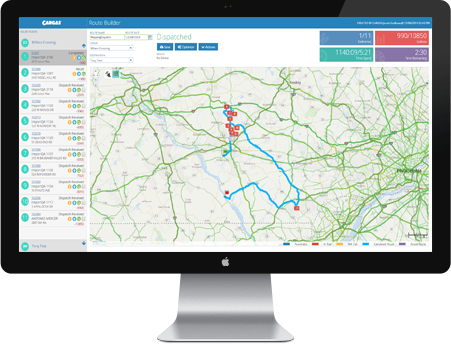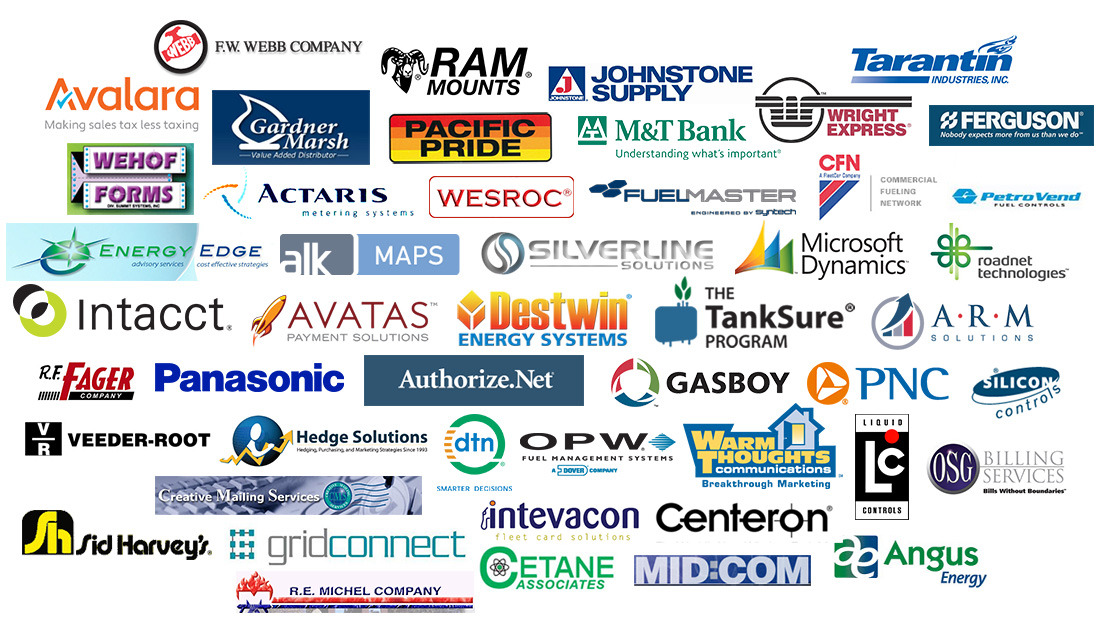Nate Scott, president of Cargas Systems, Inc. was recently interviewed by the Oil and Energy magazine on the topic of evolution in technology for fuel delivery and home comfort service. Below is a copy of the interview.


Technology for energy marketers continues to evolve, creating new pathways for companies to serve customers, improve profitability and reduce costs. Oil & Energy recently caught up with Nate Scott, President of Cargas Systems, in Lancaster, PA, for an in-depth discussion of technology for fuel delivery and home comfort service. Scott has been with Cargas since 2005 and served as Vice President of Cargas Energy before his promotion to President.
Scott believes marketers should embrace technology and focus on three critical areas: managing margins, creating a customer-centric environment and driving down operational costs. He recommends that managers set aside any apprehensions they may have and focus on how technology can make their companies more competitive.
“We have been in the technology industry for a long time, and over the last five years the changes have been absolutely revolutionary,” Scott said. Smartphones and tablets now outsell personal computers, and “consumerization” has seized the industry. That means that widespread use of consumer-friendly technology such as smartphones and tablets have changed expectations. “People expect the software at work to be as easy to use as the technology at home, and they expect to be able to access information any time from any device,” Scott explained. Company information can now be stored in “the cloud,” and managers and employees can have real-time access from anywhere. “You can securely run nearly the entire back office of Cargas Energy on an iPad without the need for installing software” he said.
During our recent conversation, we asked Scott to share thoughts on how technology can help companies better meet the important challenges they face on a daily basis.
Improving Drop Size While Minimizing Run-Outs
Cargas believes in integrating forecasting information into the dispatching and mobile components of the back office. The company uses the combination of a “seasonal K factor” and a Season Master option to help marketers optimize the accuracy of delivery forecasts. Marketers can change the start of winter season forecasting in response to the actual conditions, rather than the calendar. “Forecasting has to be flexible. We allow you to be granular, so you’re not applying a K factor at a time of the year when you don’t need it,” he said. “That allows for a much more refined forecast for delivery, which helps to improve drop size tremendously.”
Cargas also enables real-time exception reporting to help companies flag run-outs and deliveries that were outside predetermined parameters. To improve planning, Cargas Energy also includes a regression tool to enable historical analysis on each automatic delivery account and improve drop sizes going forward.


Reducing Data Entry and Improving Data Access
“You want to enter data one time and have it pass through and integrate through teams and systems multiple times,” Scott said. Cargas strives to minimize data entry and maximize access to core information. For example, customer service representatives (CSRs) and other employees using Cargas Energy can gain access to vehicle locations in the field with no data entry at all. The vehicles carry GPS trackers that relay location in real time, and the system can be configured to enable a CSR to view vehicle locations through the customer service screen. If a CSR takes an order for delivery, they can identify the nearest driver and add the ticket to the driver’s route. In the truck, the driver’s route will update automatically. “We have taken a hard look at the key pieces of data that different roles might want to see and made those available so employees can drill back and forth and get major efficiencies,” he said.
Empowering the CSR
Cargas sees a trend of companies empowering CSRs to schedule deliveries and service work directly, and Cargas developers have adapted their software to provide essential support. “CSRs need to be proactive and react to customer needs,” Scott said.
One area that Cargas has targeted is budget plans. Cargas Energy includes a budget wizard that enables a user to calculate, adjust and finalize a budget plan in real time. “We let the system figure it out instead of using calculators and calling the customer back later,” he added. “We’ve heard from our customers that markets are very competitive, and they don’t want to let customers get off the phone. They want to handle the entire interaction on the first call, and we’re building in the tools like this to help.”
Cargas has also woven elements of the Microsoft CRM application into Cargas Energy to provide further support. “Customer service folks have opportunities to cross-sell and upsell and to work with customers in new ways,” Scott explained. “We want to enable that and not hold them back. CRM (Customer Relationship Management) enables users to input customer information into a relational database pertaining to system type and equipment age, service contracts, budget plans, and more and then use it to improve sales and lead management and sales accountability. For example, the software can generate a list of customers without service contracts and with equipment more than five years old and use it for a service contract marketing campaign. ”You can mine the base and identify opportunities and kick off campaigns to generate more opportunities to work with customers,” he said.


Communicating With the Fleet
“Energy marketers have 90 percent or so of their assets out in the field throughout the day,” Scott noted. “Without GPS and mobile tied to the back office, you’re kind of running blind. It is important for managers to view what the team is doing and be able to make adjustments on the fly and react to customers’ needs in real time.” He strongly recommends that companies use a back office system that integrates in real time with mobile applications that have GPS built into them. “You need to have your mobile base and your back office connected. The GPS allows you to look at where your assets are and know which drivers and technicians are closest to a given customer now or later in the day, depending on the route assignments,” he said.
Cargas Energy offers users the ability to view the entire fleet in real time, see where they all are, and even to detect whether any vehicles are speeding.
The Cargas system can also gather data from vehicles in real time, because the mobile applications interact with electronic meters and registers. A user can assign a drop of 100 gallons, and the mobile application will control the register to turn off at 100 gallons and print a ticket without any keypad interaction by the driver. The mobile application can also transmit the sales information to the back office in real time.
“Customer service, dispatch and posting can all see that a delivery was made,” Scott said. “There is no waiting until the end of the day to see what happened.” Users can make decisions more quickly, and CSRs can give customers timely, precise information.
Managing Payments and Receivables
Cargas Energy helps users manage payment lifecycles from the start. Users can enter the customer’s credit card or bank information at signup and use the software to preauthorize credit card payments before work is done or fuel is pumped. By checking the availability of credit, companies can detect insufficient credit lines to avoid doing work for customers who will be unable to pay the cost. The system meets security requirements because it integrates with credit card processing companies to access information stored in Authorize.net “vaults” rather than storing it locally. The Cargas system also enables companies to generate priced invoices during a service call, which helps speed cash flow.
Cargas Energy also has built-in collections management that enables users to identify past-due accounts and then use a wizard to send periodic reminders and final notices. The system can also automatically send accounts to collections, using integrations with third-party collections agencies.


Reducing IT Costs
Scott says that a lot of companies are leveraging cloud computing to help control IT costs. “We see cloud technology being part of almost every technology decision moving forward,” he said. “Cargas Energy is always accessed via a web browser but users have the choice of storing data on local servers or storing it all in the cloud. Cloud storage can provide superior security and reliability while reducing IT costs and eliminating the need for software installation. It has become a way of life for a rapidly increasing number of companies” he said.
Integrating With Other Vendors
Cargas routinely updates its software to integrate with other vendors to enable credit card processing, tank monitoring, sales force automation, inventory control, collections and other functions. “We want to integrate with them to help our clients reduce manual data entry,” Scott explained. “Part of our development roadmap is to continue looking for new ways to work with our partners.”
